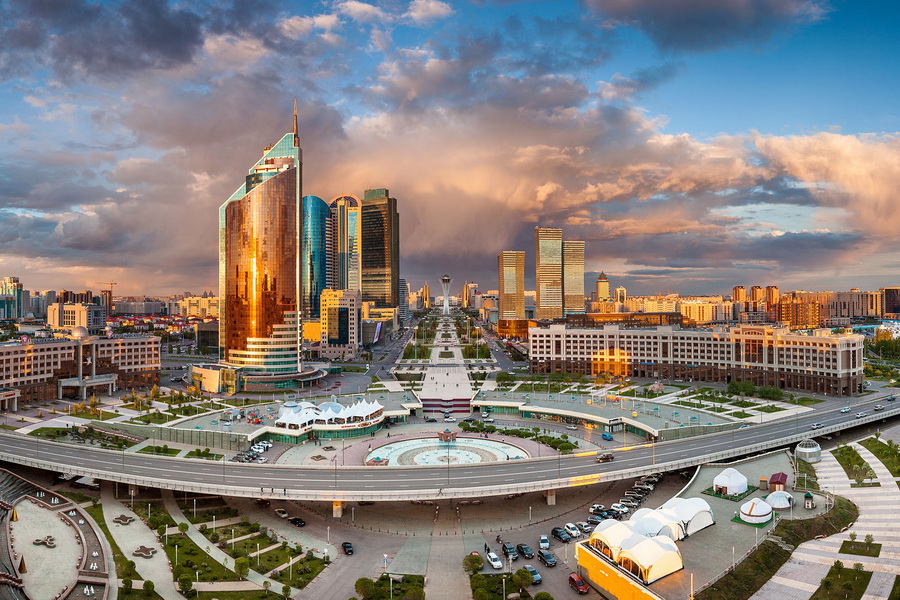
The Astana region and north Kazakhstan have tremendous development prospects for mining, in particular with reserves of industrial diamonds, tin, zirconium, uranium and gold. The transfer of the country's capital to Astana is sure to have synergies on neighbouring industrially developed Karagandy, Pavlodar, East Kazakhstan and Kostanay regions. In addition it will boost local entrepreneurship and business through the creation of foreign companies' headquarters, branches of major banks and eventually their headquarters.
The country's administration moving to Astana by 1999 will create an influx of experts improving management, information, technical and technological expertise and trade. All this will promote business both in Akmola and its suburbs. The local market in the capital will become more diversified with a higher capacity and goods and services will grow. In short Astana will consolidate its international position for trading agricultural goods. Agriculture, stocks and shares, currencies, banking, insurance and transport, permanent fairs and exhibitions will see a sustained development and there are also good prospects for transport and trade facilities.
Astana is to become an important cultural and scientific center for Kazakhstan. New infrastructure will be building including a branch of the National Academy of Sciences, new educational establishments, a national library, a national museum, a modern art gallery, a center for socioeconomic technologies, a business center, a children's park, an aqua park, as well as various cultural venues and healthcare establishments. Astana's population is growing particularly due to the expansion of transport, communication and public utilities and services. It is only natural to expect a country-wide redistribution of manpower, particularly highly qualified workforce. The new capital will eventually become the center of education, culture and public service currently concentrated in Astana. According to preliminary estimates the population of Astana may rise to 450,000 by 2005 and 550,000 by 2030.
To develop the economic potential of the region, attract foreign investors to Kazakhstan and encourage their participation in the economic development of the capital Astana was declared a special economic zone in 1997.
Firstly Astana is a customs-free zone. Any person or organisation engaged in business activities within the city's territory can import goods duty- and tax-free.
Secondly, goods manufactured on the territory of the special economic zone are exempted from customs duties when exported.
And thirdly, a favourable taxation regime applies to construction and maintenance of real estates. Nearly 18 billion Tenge were invested in the fixed assets of Astana city in 1997, including Turkish, Israeli, Italian and other foreign investments. Kazakhstan businessmen are no less active investors. They include firms such as Astana-holding, Raimbek, Accept and Diamond. A special plan to rehabilitate and develop the economic potential of the new capital's region has been elaborated and is being implemented.
Local companies are seeing results through mastering new technologies and installing up-to-date production lines. Major industrial giants which - in their former obsolete condition were below the new economic standards are being restructured and split up and new enterprises created to manufacture household appliances, provide spare parts and maintenance of agricultural equipment or self-contained power supply equipment operating on liquid fuel. A huge construction project for housing was also launched. In 1997 the volume of construction was worth 14 billion tenge, six times the 1996 level. No less advanced is the programme for developing telecommunications aiming to provide as many as 30 handsets per 100 residents in Astana by 2010.
Astana History 1 - 2 - 3

